[NOTE: The diagram below has since been expanded and reposted here on March 10, 2022.]
Here is something I designed for our catechism class to help young and old track with the main contours of Covenant Theology and its bearing on redemptive history. Comments below.
![S Cat 020 The Covenants [CCat]](https://westportexperiment.files.wordpress.com/2019/12/s-cat-020-the-covenants-ccat.jpg)
Much of this is self-explanatory for those with a working knowledge of Reformed doctrine. But a bit of clarification on my design. I added a dashed, horizontal line & arrow from Covenant of Works moving through the OT and NT dispensations to help reduce the impression that it is somehow a cipher after the Fall. I also configured the OT period to begin at Sinai (as technically it does), though canonically it usually embraces everything from Genesis to Malachi. Third, the dashed, vertical line above Sinai intersecting the horizontal lines of the Moral and Ceremonial law is intended to reflect the development and institutionalization of the latter and the explicit publication of the former. Last, the dashed and hard vertical lines at the cross represent the distinction between the definitive abolition of these laws at 33(-ish) A.D. and their actual, outward end with the destruction of the Temple and Jerusalem in 70 A.D.
I omitted the ‘biblical’ covenants (Noahic, Abrahamic, Davidic), leaving that for another day and another diagram.
And now you’ll need a chart to understand all that! Seriously, though, if you can help me perfect this further, I’m open. Just as long as you’re no Dispy, Hyper-Preterist, or any of the countless bunny trails from good old 1646 Federalism.
Read Full Post »
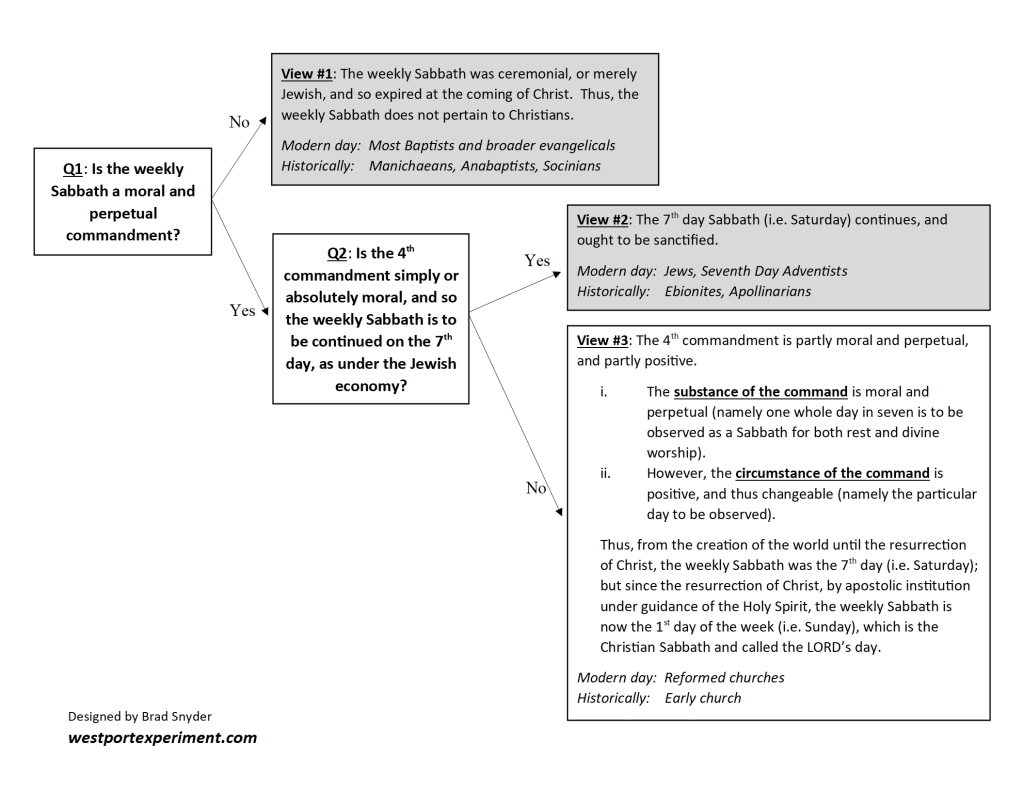
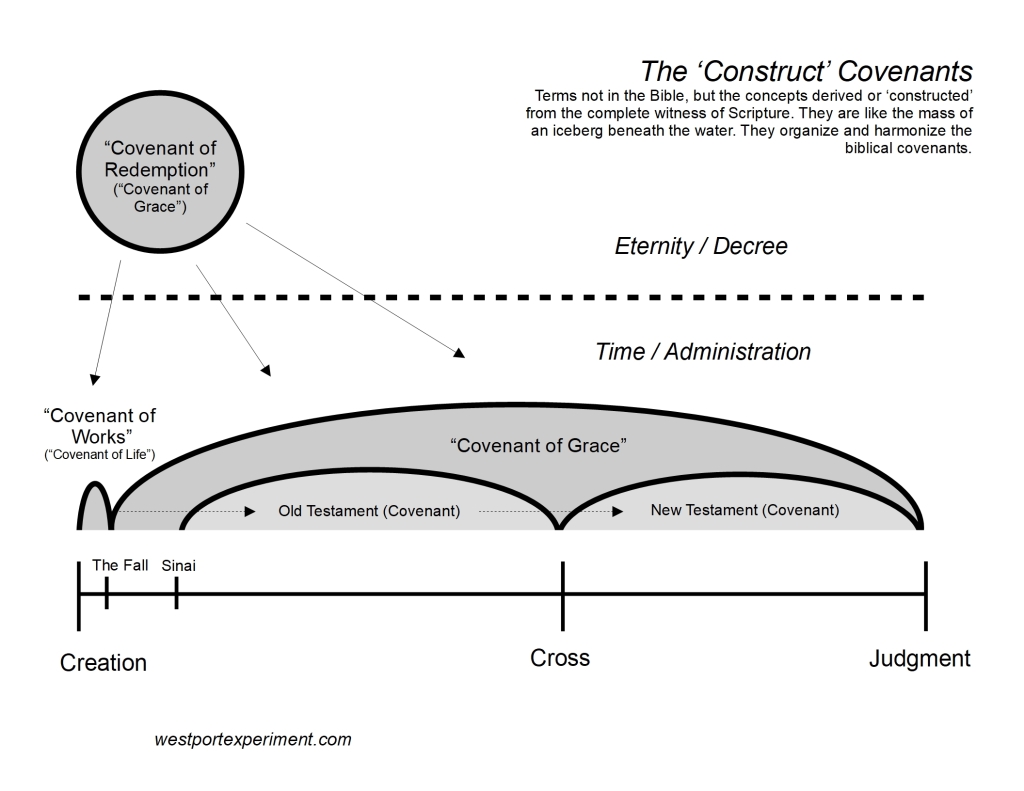
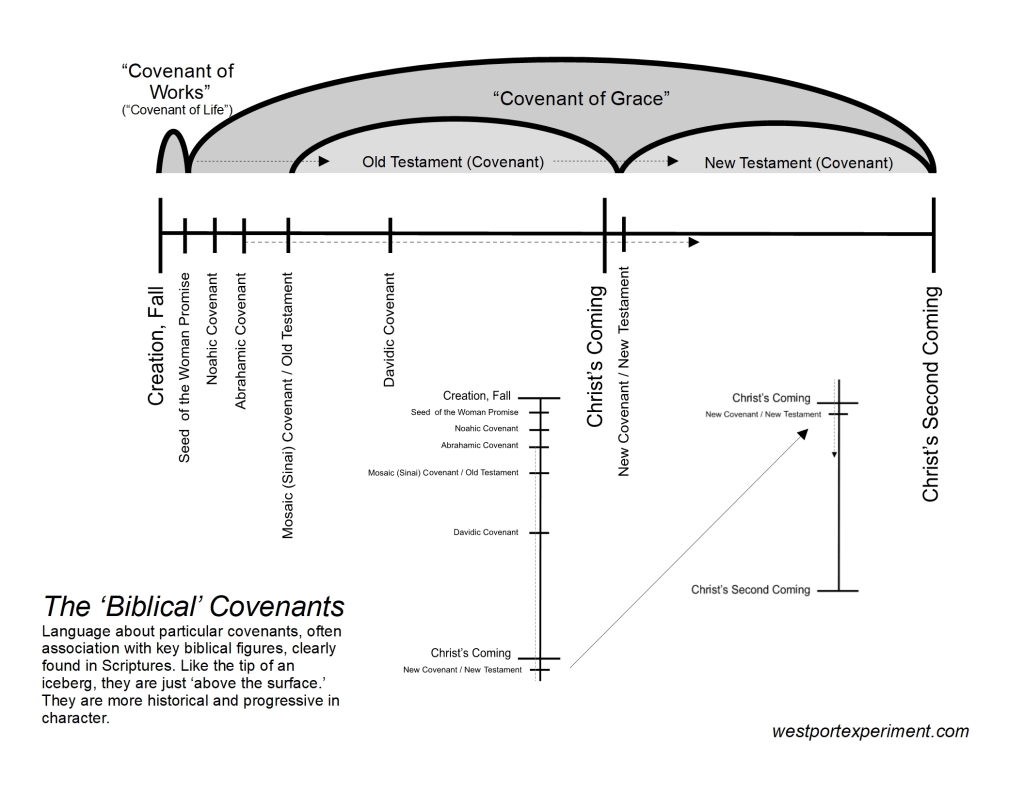
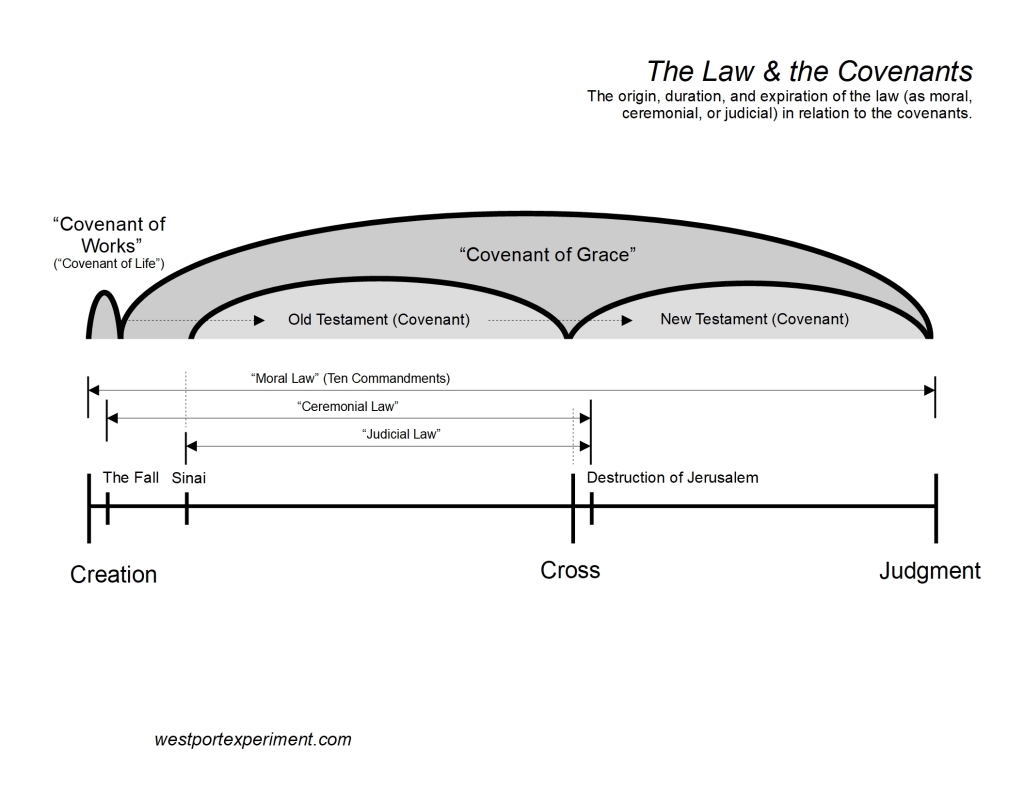
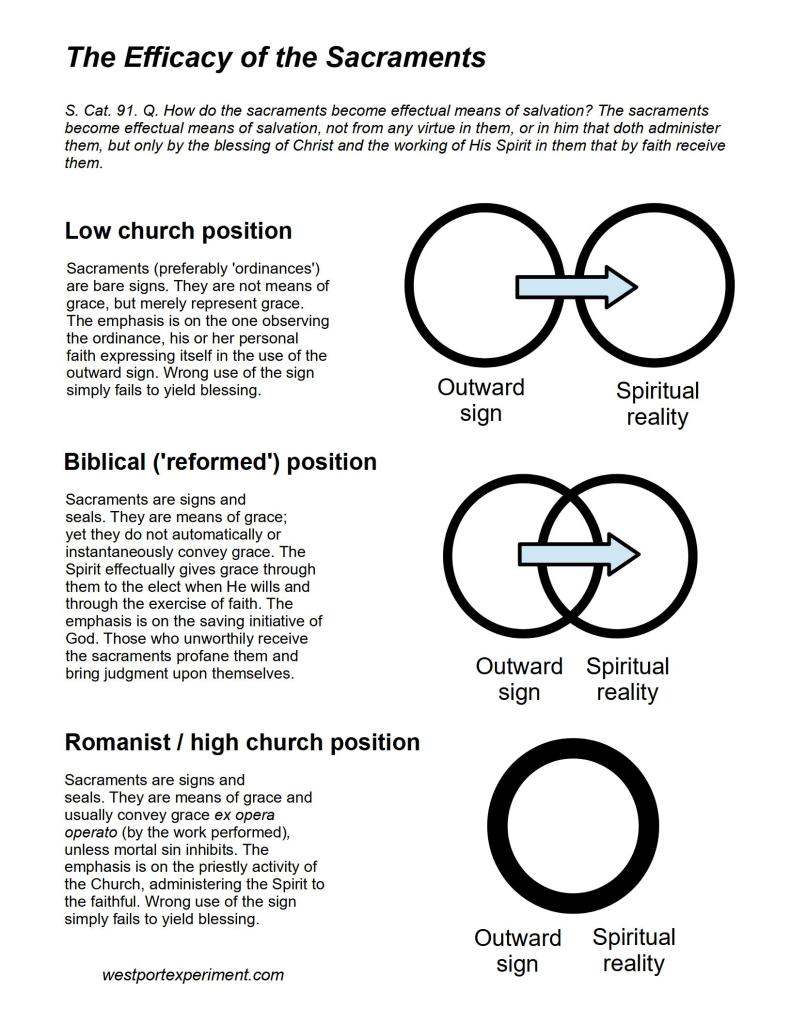


![S Cat 049-052 Sorting Worship [CCat]](https://westportexperiment.files.wordpress.com/2020/08/s-cat-049-052-sorting-worship-ccat-2.jpg)
![S Cat 020 The Covenants [CCat]](https://westportexperiment.files.wordpress.com/2019/12/s-cat-020-the-covenants-ccat.jpg)